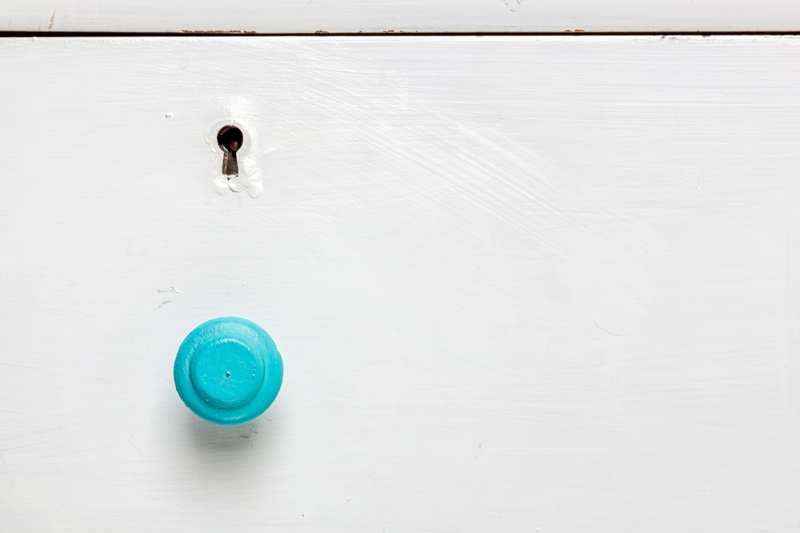Step-by-Step Guide to Reducing Household Waste
In today's world, reducing household waste isn't just a trend--it's a necessity for a more sustainable and healthy environment. Every piece of waste reduction at home makes a difference, from conserving resources to minimizing landfill usage. This comprehensive guide provides a step-by-step approach to help you cut down home waste generation and live a greener life.

Why Is It Important to Reduce Household Waste?
The impact of excess household waste extends beyond our curbside bins. Landfills contribute to greenhouse gas emissions, leach toxins into soil and water, and consume precious land resources. By being more conscious of the amount of trash we create, we can conserve energy, reduce pollution, save money, and even inspire our communities to adopt eco-friendly habits.
Main Benefits of Reducing Household Waste
- Decreases environmental pollution
- Conserves natural resources
- Lowers waste disposal costs
- Promotes a healthier lifestyle
- Reduces carbon footprint
Understanding Your Household Waste
Before starting your waste reduction journey, it's essential to evaluate what types of waste your home generates. Take a week to track all household waste--write down everything you throw away, including food scraps, packaging, broken items, and recyclables.
Waste Audit Checklist
- Food waste
- Plastic packaging
- Paper and cardboard
- Glass
- Metal cans
- Textiles and clothing
- Electronics and batteries
- Hazardous waste (cleaners, paint, etc.)
Tip: Involve your family in the audit
An eye-opening waste audit can help everyone in the household see where improvements are possible. Use this as an opportunity to discuss the importance of minimizing household waste and brainstorm strategies together.
Step 1: Assess and Plan
Once you have your waste data, analyze it to find out what your largest sources of household waste are. Are food scraps filling your garbage bin? Is plastic packaging piling up? Use these insights to set specific goals for your home, such as:
- Reducing food waste by 50% in three months
- Switching to reusable shopping bags and containers
- Composting kitchen scraps
How to Set SMART Goals
- Specific: Pinpoint exactly what you want to reduce (e.g., single-use plastics)
- Measurable: Track progress using weekly waste measurements
- Achievable: Ensure your goals are realistic for your lifestyle
- Relevant: Focus on waste that has the highest impact
- Time-bound: Set a deadline for reviewing results
Step 2: Reduce--The Most Effective R of the 3 Rs
The first and most effective household waste reduction tip is to avoid generating waste in the first place. By being more intentional with what you bring into your home, you can significantly minimize overall waste.
Practical Ways to Reduce Household Waste
- Choose products with minimal packaging: Buy in bulk, avoid individually wrapped items, and select brands committed to sustainability.
- Go digital: Opt out of junk mail, switch to online banking and subscriptions to reduce paper clutter.
- Plan meals and shop with a list: This prevents impulse buys, reduces food waste, and saves money.
- Purchase quality, long-lasting goods: Fewer replacements mean fewer items in the landfill.
Highlight: Say "No" to Single-Use Items!
Avoid plastic straws, cutlery, paper plates, and disposable cups. Instead, carry reusable alternatives wherever possible. These small switches have a big impact when implemented daily.
Step 3: Reuse--Give Your Items a Second Life
The next best practice in cutting down home waste is to reuse. Many items can be used multiple times before discarding or recycled after their first use.
Ideas for Reusing Common Household Items
- Glass jars and containers: Perfect for food storage, organizing small items, or even DIY projects.
- Old clothing and textiles: Repurpose as cleaning rags, reusable shopping bags, or patchwork projects.
- Gift bags and wrapping: Save and reuse for future occasions instead of discarding after one use.
- Plastic grocery bags: Reuse as trash liners or return to stores that accept them for recycling.
Tip: Host a Swap Party
Invite friends and neighbors to exchange gently used clothing, toys, books, or household items. It's a fun way to reduce domestic waste while refreshing your belongings.
Step 4: Recycle--Dispose of Items Responsibly
Recycling is crucial for managing residential waste that can't be eliminated or reused. Understanding what can be recycled in your community is essential, as rules vary widely.
Recycling 101: What You Need to Know
- Check local guidelines: Find a list of acceptable materials from your municipality.
- Rinse containers: Remove food residue to avoid contaminating other recyclables.
- Don't "wish-cycle": If unsure about an item, check before adding it to the recycling bin--improper items can ruin entire loads.
- Recycle electronics and hazardous waste properly: Use designated collection days or drop-off centers for e-waste, batteries, and chemicals.
Pro Tip: Set Up a Recycling Station at Home
Designate clearly labeled bins for paper, plastics, metals, and glass to streamline your recycling process and encourage family participation.
Step 5: Composting--Transform Food Waste into Black Gold
One-third of all food produced globally is wasted, much of it ending up in landfills where it generates methane--a potent greenhouse gas. Composting diverts organic waste from landfills, creating nutrient-rich soil for your garden or house plants.
Composting Methods for Beginners
- Backyard compost pile or bin: Use for fruit and veggie scraps, eggshells, coffee grounds, and yard waste.
- Worm composting (vermicomposting): Great for indoors or small spaces.
- Bokashi composting: A fermentation method that can handle small amounts of dairy and meat scraps.
What CAN Be Composted:
- Fruit and vegetable scraps
- Coffee grounds and filters
- Tea bags (check if plastic-free)
- Eggshells
- Shredded paper and cardboard
- Yard clippings
What Should NOT Be Composted:
- Meat and dairy (unless using Bokashi)
- Oily foods
- Synthetic materials
- Pet waste
Step 6: Evaluate and Improve Your Efforts
Reducing household waste is a journey, not a destination. Set aside time each month to review your progress, celebrate wins, and brainstorm new solutions when challenges arise.
Track Your Waste Reduction Milestones
- Compare weekly or monthly trash bags
- Monitor your recycling output
- Log food waste and composting achievements
- Discuss with your family what's working or needs improvement
Encourage Feedback and Innovation
Ask every household member for ideas on further reducing waste. Sometimes children or guests will notice simple solutions adults might overlook!
Advanced Tips to Further Reduce Home Waste
Make Thoughtful Purchases
- Choose reusable water bottles, coffee cups, and lunch containers
- Switch to cloth napkins and unpaper towels
- Buy secondhand items: Furniture, tools, toys, and even appliances can often be found in excellent condition.
- Support zero-waste stores: Some local shops allow you to bring your own containers for bulk goods and personal care items.
Reduce Waste in the Bathroom
- Use shampoo bars instead of bottled shampoo
- Switch to biodegradable bamboo toothbrushes
- Try refillable or zero-waste deodorant and razors
Cut Down on Kitchen Waste
- Store leftovers in glass containers instead of plastic wrap
- Freeze excess produce before it spoils
- Start a "leftovers night" each week to use up what's in the fridge
- Use beeswax wraps or silicone lids instead of cling film
Eco-Friendly Cleaning Hacks
- Make your own cleaning products with vinegar, baking soda, and essential oils
- Use washable rags instead of paper towels
- Refill spray bottles at bulk stores
Teaching Kids About Household Waste Reduction
The earlier children learn sustainable habits, the more likely they will carry them into adulthood. Engage kids in your efforts with these strategies:
- Make recycling a game--see who can sort the recycling correctly and fastest.
- Assign compost duties--kids can collect and add scraps to the compost bin.
- Have craft projects using upcycled materials.
- Encourage them to donate unused toys and clothes.

Overcoming Common Challenges in Waste Reduction
What If My Local Recycling Program Is Limited?
Seek out third-party services for items like glass, e-waste, light bulbs, and batteries. Many retailers offer recycling drop-offs for specific products (electronics, printer cartridges, clothing, etc.).
How Do I Handle Resistant Family Members?
Lead by example and introduce changes gradually. Celebrate small wins, keep communication open, and find replacements that don't compromise comfort or convenience.
Lack of Time or Energy?
Start with one area (like switching to reusable bags) and gradually add more steps as the new habit takes hold. Consistency is key; every little bit counts.
Final Thoughts: The Ripple Effect of Reducing Household Waste
Making an ongoing commitment to household waste reduction benefits not only the planet but also your wallet and wellbeing. Your actions can also inspire those around you to make positive changes in their own lives.
Summary Checklist for Reducing Household Waste
- Assess and plan your waste reduction strategies
- Prioritize reducing over reusing and recycling
- Compost organic waste
- Recycle correctly and responsibly
- Buy smarter and support sustainable brands
- Involve the whole family
- Celebrate and share your progress
By implementing these practical steps, you'll be well on your way to significantly reducing home waste, living more sustainably, and helping to protect the environment for future generations.